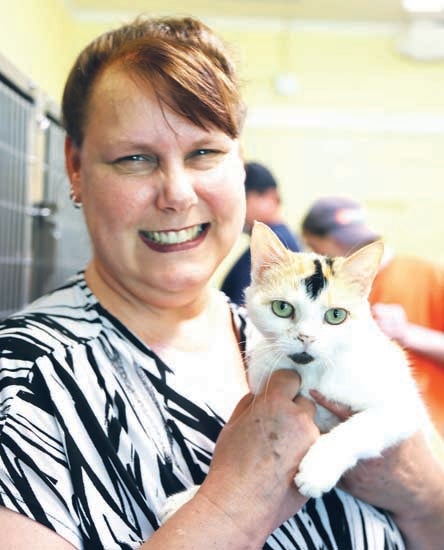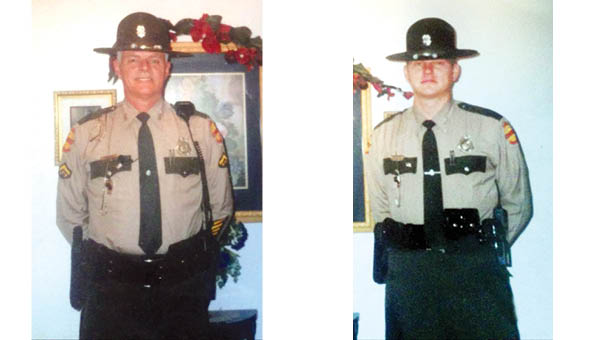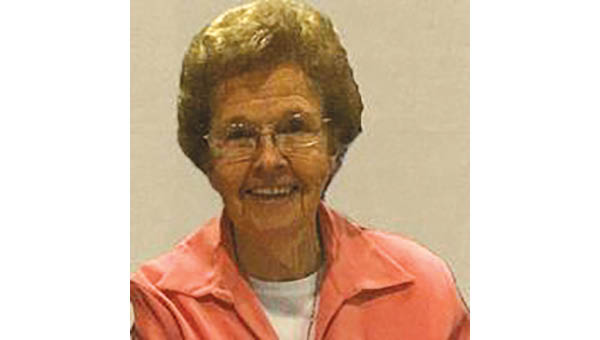New director hopes to reduce number of pets at shelter
Published 8:30 am Tuesday, July 14, 2015

Star Photo/Kayla Carter
Elizabethton/Carter County Animal Shelter Director Stacey Heiden hopes to see the shelter more efficiently match pets like C.J. to the right home.
During her first day Monday, the new Elizabethton/Carter County Animal Shelter Director Stacey Heiden had already outlined big plans for the facility and its role in the community.
“The whole idea is to reduce the number of pets coming into the shelter,” she said. “We need to find and utilize other alternatives and avenues. We need to make those options available to people looking for help.”
Having moved to the area four years ago from California, Heiden hopes to help animals that do end up at the shelter find the same sense of home she has found here.
Throughout her entire life, Heiden has remained dedicated to the cause of helping homeless animal populations. As her level of involvement grew locally, so did her desire to direct the animal shelter.
“I’ve had an interest in doing this since I moved here,” she said. “I watched them build the new shelter and have volunteered for various local animal organizations.”
One important part of Heiden’s role will be to bring all those various organizations together with a common goal.
“We should all work cohesively to become a no-kill community,” she said. “That’s what everybody wants. It’s the end goal for all of our local groups.”
Creating a no-kill community mindset starts with fostering a countywide understanding that the shelter is going to be the last alternative for unwanted pets or stray animals reported to them. Heiden wants to make sure to ask people who report stray animals whether they would be willing to foster the pet or find a friend willing to do so.
“When they come to the door, we want to make sure they realize that this could mean the end of that animal’s life,” she said. “We don’t want that. We want to be able to take in animals that don’t have any other alternative.”
There are currently 14 items on Heiden’s action plan. If something is already in place, she plans to improve efficiency.
Some of her ideas include mandatory spay and neuter for all outgoing adoptions, quarantine and vaccinations for incoming animals, humane education and outreach programs, satellite adoption programs, implementing a software system like Animal Shelter Manager and creating a checklist to ensure all avenues to reunite lost pets are taken. She also hopes to designate a volunteer coordinator and recruit a strong volunteer force in the community. Heiden recognizes the two-fold benefit of using the inmate work release program. However, she doesn’t want inmates to focus solely on facility cleanliness. She’d like to see them in charge of teaching dogs basic obedience commands.
One of the more unique ideas Heiden has is called the Right Breed for the Right Lifestyle program.
“A temperament test and evaluation should be done on all incoming animals with a comprehensive checklist,” according to Heiden’s action plan. “Potential adopters should fill out an adoption application, which will match them with available animals. The right match equals less returns.”
Heiden already has the Unicoi County Animal Shelter on board with an idea to do pet swaps. This would also boost rapport with other area shelters, she said.
“If we have an animal that isn’t moving for whatever reason, it will be transferred to Unicoi and we will take one of their pets,” she said in her action plan. “Sometimes just being seen in another location ups the chances for adoption.”
Heiden also wants to put more emphasis on pet finding services by grooming pets for portraits and writing more in-depth biographies.
“These can then be uploaded to Facebook, PetFinder and the website,” she said in her plan. “Many people will even come from out of state to adopt the animal that catches their eye.”
Fundraising is another aspect of the job Heiden is passionate about. She would like to see the shelter offer obedience training at a nominal fee as well as classes on building a dog house and pet photography.
“There are a million fundraising ideas that are fun and simple to do,” she said in her action plan.
Last, but not least, was to improve the environment for all pets that end up at the shelter.
“While the animals are in our care, every effort should be made to lessen the stress of these pets,” she said in the plan. “Play dates with volunteers, walking, toy-time and comfort should be offered.”
In order for Heiden’s ideas to be successful, she said she is going to need the community to come together for the cause.
“We are going to need fundraising, a great volunteer force and to work with other community programs,” she said. “There’s going to be a call to action to get some of this put in place. We have a ways to go, but that’s OK. We will get there.”
Through her experiences in California, Heiden hopes to overall bring a fresh perspective to the role.
“I have a good 20-year background,” she said. “I was director of Cats in Need in California. I worked for the animal shelter there helping with volunteer programs and adoption satellite programs.”
Humane education is Heiden’s favorite way to positively reach out to the community on the homeless animal population issue.
“We will work with community groups to set the next generation on the right path to understanding proper pet ownership,” she said. “This is a community problem. It’s everyone’s problem. It’s something that we can overcome as a community with a little effort and a lot of really good programs put in place.”
For more information, to volunteer or to speak with Heiden, call the shelter at 547-6359.





